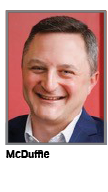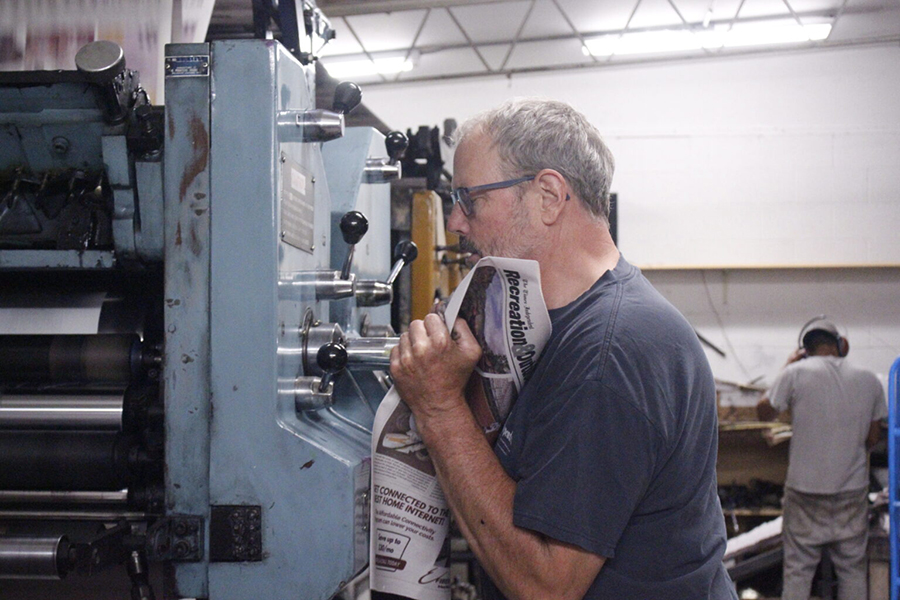Nonprofit news trust grows in urban and rural areas
Al Cross
Nov 1, 2023



Nonprofit newspaper journalism, until now largely a feature of urban areas, is going rural — especially if the National Trust for Local News keeps up what it’s doing and plans to do.
“By December, we will be the fifth largest independent newspaper operator in the country,” among those that are not publicly traded or owned by hedge funds, the trust’s chief portfolio officer, Ross McDuffie, told the New England Newspaper and Press Association conference attendees Oct. 19.
The trust recently bought 22 newspapers in Maine, most of them rural weeklies, and two years ago bought 24 papers along Colorado’s Front Range. McDuffie said in an interview that the trust plans to announce acquisitions in Georgia next month. The Knight Foundation recently gave the trust $5 million to create a newsroom in Macon, where McDuffie was publisher of the Macon (Georgia) Telegraph.
The trust says it is exploring opportunities in Kentucky, Montana and New Mexico, and it wants to create 10 independent, state-level conservancies serving 475 counties and 20 million people in the next five years, with a goal of having one in every state. It says its fundamental purpose is to “keep local news in local hands.”
At the National Summit on Journalism in Rural America in July, McDuffie said state-level nonprofits are “the most sustainable path forward for rural newsrooms.”
He told NENPA’s online meeting, “Our vision is to build and operate a federation of nonprofit subsidiaries that can sustain high-quality community journalism in small communities across the nation” and to see that “established, trusted news organizations thrive and remain grounded in the communities they serve.”
The trust gets its money to buy newspapers from donors, ranging from local individuals to major foundations. Those listed on its website include George Soros’ Open Society Foundations; in August, the publication Semafor reported that OSF and Swiss billionaire Hansjorg Wyss, who is not listed on the trust’s website, “played a central role” in the Maine purchase. The trust denied that OSF committed money for the purchase, and OSF said its grants to the trust “have not included money for specific projects.”
The trust wouldn’t comment on Wyss (who earlier tried to buy Tribune Co.) and said it would tell more about the funders when its Maine advisory board was constituted in September. Asked Oct. 24 when that was going to happen, McDuffie said the board will make that decision and its membership still hasn’t been finalized, but “There is a real desire to have that constituted by the end of the year.”
The trust is still raising startup money in Maine. McDuffie told NENPA that the trust has raised $18.1 million for a two-year, $22 million “transformation” plan that includes unifying three operating businesses and expanding commercial printing because “We believe in print and its longevity and its ability to serve an audience.”
He said the trust wants to “rejuvenate” its community newspapers, most of which are weeklies; “significantly boost” household penetration; and raise funds from “a very large and curious audience” in Maine. But one of his PowerPoint slides said the goal is to operate “as a sustainable news enterprise that does not require ongoing general support from philanthropy.”
As with for-profit enterprises, bigger is better, McDuffie said: “As we scale rapidly, we are uncovering more opportunities to leverage efficiencies of scale . . . that were only previously available to large media conglomerates or corporations,” such as buying power for paper, employee benefits, digital transformation and attracting talent.
He said the trust has raised $30 million across geographical, ideological, generational and programmatic lines that usually separate philanthropies, and “Funders are having a consistent and palpable reaction to our narrative within the first few minutes of hearing our story.”
Much of the philanthropy for local journalism has gone to startups, mostly online, but they are almost entirely based in urban areas, and McDuffie and others believe philanthropists need to look at funding the purchase of legacy newspapers to prevent the creation of news deserts in rural areas.
“With sufficient capital and expertise, conserving and transforming existing news sources IS an efficient way to strengthen democracy and support that civic and social fabric of small towns and rural communities,” he told NENPA, emphasizing the verb.
“These communities need reinvestment in the newsgathering teams that have spent decades of building trust and credibility,” he continued. “The creation of these state-level conservancies amalgamate legacy ownership into one operating model and unlock efficiencies of scale while keeping quality local news as the North Star of decision-making, as opposed to what’s happening at other larger, conglomerate, corporate media, where profits or shareholder value are typically the nexus of decision-making. It’s a difference of motivation.”
He said the need is greatest in the Southeast, where the trust estimates that 23 million people are at risk of losing their only local news provider. That’s more than half its estimate of 45 million in 1,424 counties – 45 percent of the nation’s counties. The estimates are based on counties with median household income below the national average.
The trust figures that in every state in the Southeast (including both Virginias), more than half of counties are at risk of becoming permanent news deserts. It estimates that is also the case in Idaho, Montana, New Mexico and Nevada.
To the NENPA attendees, McDuffie rattled off the impact of news deserts, as established by research: higher taxes and borrowing costs, more government employees, decreased visibility of government decision-making, and more corruption and misuse of public funds.
And there’s a more fundamental threat. “There’s no democracy that can function without a shared understanding of what’s true and what’s not,” McDuffie said, in one of the pithier versions of that warning I have heard.
In an era of misinformation, including disinformation by political interests who want to control narratives to serve their own interests, news consumers will be skeptical of out-of-state outfits that use billionaires’ money to buy their local newspapers. So the trust will need a broad range of in-state funders and boards that will help insulate the funders from the newsrooms.
McDuffie says its news outlets follow the transparency guidelines of the Institute for Nonprofit News, requiring website publication of donors of $5,000 or more, and the Society of Professional Journalists Code of Ethics. He said funders know the trust’s editorial-independence and non-interference polices, and “Our local newsroom staff are the only people who will decide what stories to pursue, the timing of those stories and their content.”
In a distrustful information environment, the trust’s newsrooms might have to prove that every day. But if they do, the nonprofit option is a promising long-term path for sustaining rural journalism.
Al Cross edited and managed rural newspapers before covering politics for the Louisville Courier Journal and serving as president of the Society of Professional Journalists. He is director emeritus of the University of Kentucky’s Institute for Rural Journalism and can be reached at al.cross@uky.edu.










